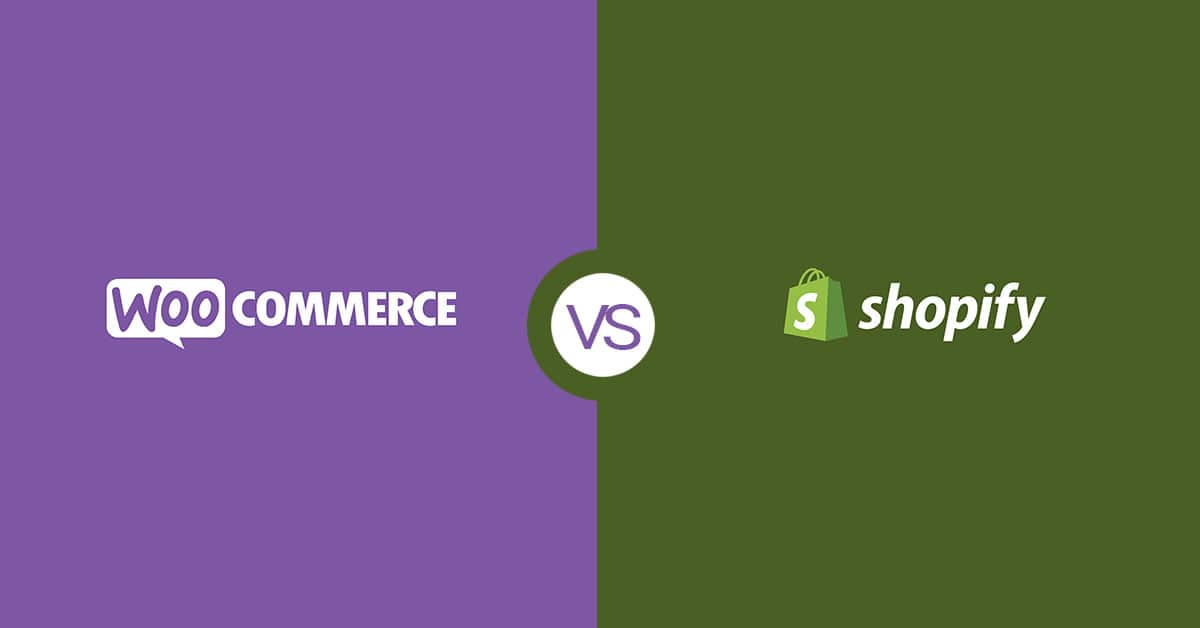WooCommerce vs. Shopify: A Detailed Comparison for Your E-commerce Business

When it comes to setting up an e-commerce store, choosing the right platform is paramount to your success. Two of the most popular options, WooCommerce and Shopify, offer distinct features and capabilities. In this detailed comparison, we’ll explore the differences to help you make an informed decision for your online business.
Advantages of WooCommerce:
- Customization: WooCommerce, being a WordPress plugin, provides unparalleled customization. You have full control over your website’s design and functionality.
- Cost-Effective: WooCommerce itself is free, making it a budget-friendly choice for startups and small businesses.
- SEO-Friendly: WordPress, when used with WooCommerce, offers robust SEO capabilities, including plugins like Yoast SEO, to boost your search engine rankings.
- Ownership: You have complete ownership and control of your website, data, and hosting.
- Scalability: WooCommerce can scale with your business, accommodating growth seamlessly.
- Large Community: A vast WordPress community ensures abundant resources, plugins, and themes.
Disadvantages of WooCommerce:
- Technical Knowledge: It may require technical expertise to set up and maintain WooCommerce, which can be challenging for beginners.
- Hosting Responsibility: You are responsible for choosing a hosting provider, which may add to the cost and complexity.
Advantages of Shopify:
- User-Friendly: Shopify is incredibly user-friendly, making it suitable for entrepreneurs without technical skills.
- All-in-One Solution: Shopify provides hosting, security, and maintenance, streamlining the setup process.
- App Ecosystem: Shopify’s app store offers a wide range of add-ons to extend functionality.
- Mobile Optimization: All Shopify themes are mobile-responsive, ensuring a seamless shopping experience on all devices.
- Security: Shopify takes care of security, including SSL certificates, to protect your customers’ data.
- 24/7 Support: Shopify offers round-the-clock customer support, ensuring assistance when you need it.
Disadvantages of Shopify:
- Monthly Costs: Shopify requires a monthly subscription fee, which can be an ongoing expense.
- Transaction Fees: Depending on your plan, Shopify may charge transaction fees on sales, affecting your profitability.
- Less Customization: While customizable, Shopify may have limitations compared to WooCommerce, especially for advanced users.
Cost Comparison
| Aspect | WooCommerce | Shopify |
|---|---|---|
| Initial Setup | Free (requires hosting) | Monthly subscription fee |
| Hosting | Varies (costs depend on hosting plan) | Included in subscription fee |
| Transaction Fees | None | Varies (may apply based on plan) |
| Customization | Highly customizable | Customizable, but with limitations |
| Maintenance | Self-managed | Shopify handles maintenance |
| SEO Capabilities | Strong (especially with WordPress) | Built-in SEO tools |
| User-Friendliness | Requires technical knowledge | Beginner-friendly and intuitive |
| Support | Community-driven | 24/7 customer support |
Other Important Points:
- Shopify offers a 14-day free trial to test its features.
- WooCommerce may have additional costs for premium themes and plugins.
- Consider your business size, technical expertise, and long-term goals when making a choice.
Shopify vs WooCommerce: Which One Offers Better Value for Your Money?
Conclusion:
In conclusion, both WooCommerce and Shopify have their unique strengths and weaknesses. WooCommerce offers extensive customization but requires technical know-how, while Shopify is user-friendly but comes with monthly expenses. The decision ultimately hinges on your specific business needs and preferences. Evaluate these factors carefully to select the ideal platform for your e-commerce venture.






